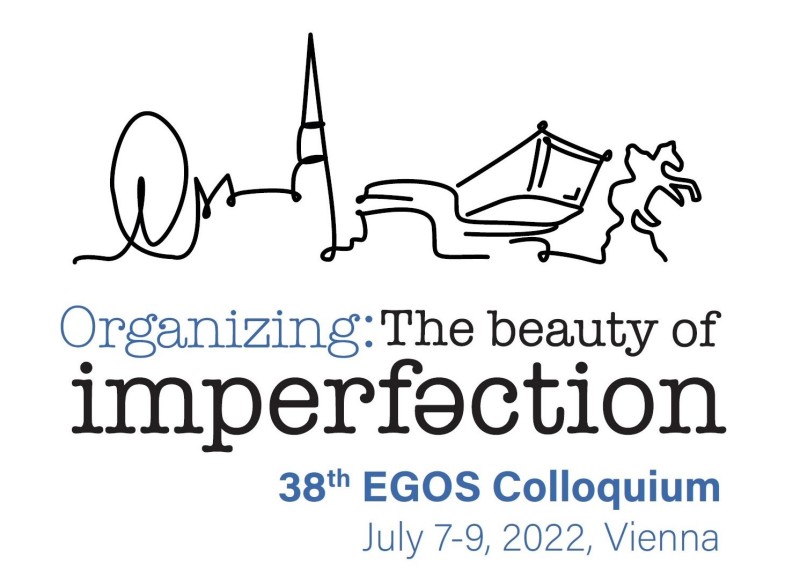Sub-theme 44: Micro-institutions: Unpacking the Building Blocks of Organizations and Institutional Fields
Call for Papers
This sub-theme seeks to put front and center the study of micro-institutions – how they emerge, how they are sustained,
and how they function – as the building blocks of more macro-structures. Micro-institutions are defined as “taken-for-granted,
normatively sanctioned set of role structures and interaction orders for collective action” (Ocasio et al., 2017: 526) that
operate within or across organizations. Examples include the Wall Street trading day, corporate takeover bids, museum exhibitions,
Supreme Court hearings, weddings, Catholic confessions, and faculty tenure processes. Micro-institutions become institutionalized
over time and in combination together form the building blocks of organizations, institutional fields, and institutional orders
(Thornton et al., 2012; Zucker, 1977; 2019).
The notion of micro-institutions can be traced back to several
intellectual traditions, such as the Chicago school of sociology and its emphasis on roles (e.g., Hughes, 1936), Goffman’s
(1974) work on role frames, Collins’ (2004) work on interaction ritual chains, and White’s (1992) notion of “cat-nets” as
twin elements underlying the reproduction of social structures and identities. Yet, despite these foundational steams of thought,
we build on a growing recognition that current day institutional analyses, both at the macro- or micro-level, often fail to
name or even identify the institution under examination (Ocasio & Gai, 2020; Zucker, 2019). Indeed, institutional scholars
have slowly moved away from explicitly studying the very object we deem crucial in organizational and institutional life –
the micro-institution (Berger & Luckmann, 1966). It is time, we suggest, for a course correction.
A handful
of scholars over the last few decades have already initiated the beginnings of this course correction, offering exemplar studies
for this sub-theme. For example, Hallett and Ventresca’s (2006) revisiting of Gouldner’s classic study Patterns of Industrial
Bureaucracy shows how an “inhabited institutions” approach sheds light on the interactional patterns of people on the
ground. Dacin, Munir, and Tracey’s (2010) study of Cambridge performance rituals during formal dining experiences demonstrates
how more macroinstitutional structures are maintained. McPherson and Sauder’s (2013) investigation of drug court proceedings
explain how actors enact institutional logics in their day-to-day organizational activity. These studies, among others, along
with recent calls for a more serious engagement with the cross- and multi-level nature of institutions (Harmon et al., 2019),
form the basis for this sub-theme.
We therefore invite scholarly contributions that further develop and clarify
the concept of micro-institutions and thus expand the frontiers of institutional analysis. In doing so, we advocate theoretical
and methodological pluralism. Theoretically, we welcome papers from diverse institutional perspectives, including (but not
limited to) the microfoundations of institutions perspective, historical, inhabited institutions, institutional entrepreneurship
and work, institutional logics, narrative and linguistic, neoinstitutionalism, “Selznickian” institutionalism, and so on.
Empirically, we welcome papers that use any qualitative, quantitative, or mixed method, including increasingly novel methods
like fuzzy-set Qualitative Comparative Analysis (fsQCA) or computational linguistics. Possible research questions might include
(but are not limited to) the following:
What is the role of individual and collective actors in the emergence, sustainability, and change in micro-institutions?
What is the role of cognitive, emotional, political, relational, interactional, structural, and cultural mechanisms (individually or combined) in shaping the emergence, reproducibility, and transformation of micro-institutions?
When and how do spontaneous interaction orders become micro-institutions?
What are the jurisdictional limits of micro-institutions and how do different role structures affect micro-institutions’ jurisdictions?
What is the role of interstitial spaces and liminal moments in the emergence and transformation of micro-institutions (e.g., Furnari, 2014)?
How do micro-institutions become institutionalized and “scale up” from the meso- to the organizational or field-level?
How do complex assemblages of micro-institutions constitute organizations, institutional orders, and institutional fields?
How do emergent assemblages of micro-institutions evolve into more stable configurations?
What are the sources of isomorphism and variation in micro-institutions within institutional fields?
What are the advantages/disadvantages of an emic (first-person) vs. etic (third-person) perspective on studying micro-institutions and their consequences?
How do people experience, relate to and connect with micro-institutions on the ground?
References
- Berger, P. L., & Luckmann, T. (1966): The Social Construction of Reality: A Treatise in the Sociology f Knowledge. Hammondsworth: Penguin Books.
- Collins, R. (2004): Interaction Ritual Chains. Princeton: Princeton University Press.
- Dacin, M.T., Munir, K., & Tracey, P. (2010): “Formal dining at Cambridge colleges: Linking ritual performance and institutional maintenance.” Academy of Management Journal, 53 (6), 1393–1418.
- Furnari, S. (2014): “Interstitial spaces: Microinteraction settings and the genesis of new practices between institutional fields.” Academy of Management Review, 39 (4), 439–462
- Goffman, E. (1974): Frame Analysis: An Essay on The Organization of Experience. Cambridge: Harvard University Press.
- Hallett, T., & Ventresca, M. (2006): “Inhabited institutions: Social interactions and organizational forms in Gouldner's patterns of industrial bureaucracy.” Theory and Society, 35 (2), 216–236.
- Harmon, D.J., Haack, P., & Roulet, T.J. (2019): “Microfoundations of institutions: A matter of structure versus agency or level of analysis?” Academy of Management Review, 44 (2), 464–467.
- Hughes, E.C. (1936): “The ecological aspect of institutions.” American Sociological Review, 1, 180–189.
- McPherson, C., & Sauder, M. (2013): “Logics in action: Managing institutional complexity in a drug court.” Administrative Science Quarterly, 20 (10), 1–32.
- Ocasio, W., Thornton, P., & Lounsbury, M. (2017): “Advances to the institutional logics perspective.” In: R. Greenwood, C. Oliver & T.B. Lawrence (eds.): The SAGE Handbook of Organizational Institutionalism. London: SAGE Publications, 509–531.
- Ocasio, W., & Gai, S.L- (2020): “Institutions: Everywhere but not everything.” Journal of Management Inquiry, 29 (3), 262–271.
- Thornton, P., Ocasio, W., & Lounsbury, M. (2012): The Institutional Logics Perspective. Oxford: Oxford University Press.
- White, H. (1992): Identity and Control: A Structural Theory of Social Action. Princeton: Princeton University Press.
- Zucker, L.G. (1977): “The role of institutionalization in cultural persistence.” American Sociological Review, 42 (5), 726–743.
- Zucker, L.G. (2019): Institutional Theory at a Cross-Road. OMT Distinguished Scholar Presentation, Academy of Management Meeting, Boston, August 12, 2019.


